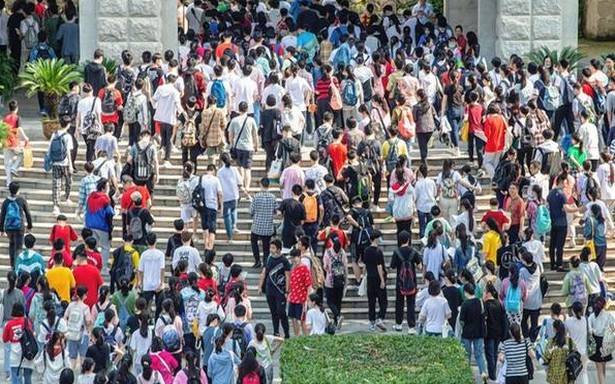Universities say they have been given no timetable from the Chinese authorities on when they can issue letters needed for visa applications for students
Two years on after thousands of Indian medical students saw their education in China abruptly put on hold amid the COVID-19 outbreak, students are still in the dark about when they can return and are growing increasingly desperate about their future.
Students from half a dozen medical colleges in China, who have remained in India over the past two years, told The Hindu in interviews that they have been given no information about when they can return and that their online classes have left them unprepared as some face imminent graduation having missed out on practical training that is a crucial component of medical education.
“Some of us are going to graduate with degrees that are only on paper, while we have wasted our family’s savings,” said one student enrolled in a college in Tianjin. The students The Hindu spoke to were all enrolled in the 45 universities authorised by China to offer MBBS degrees to foreign students taught in English. There are around 23,000 Indian medical students enrolled in Chinese programmes. The students interviewed are not being named as they were concerned about jeopardising their return to their universities.
In late January 2020, colleges across China closed amid the COVID-19 outbreak. Many students were in India during their winter holidays, and have remained in the country since. Others returned home as the outbreak spread, particularly those studying in Wuhan and in Hubei province, which is an important centre of medical teaching in China. India’s first confirmed COVID-19 case, on January 30, 2020, was a medical student from Kerala who returned from Wuhan.
Online classes
Over the past two years, students have had online classes which are used to teach theory, but clinical subjects remain untaught. Even a virtual theoretical education hasn’t been without hiccups. After the border crisis with China and the subsequent banning of 200 Chinese apps, students have to use sometimes unreliable virtual private network software to access apps where lectures are streamed. Most have to settle for subsequently downloading videos of lectures, which has meant little opportunity to interact with teachers.
“We are slipping into depression,” said one student from Karnataka. “And I’m hearing this from all of my classmates. We face constant questioning from our family, who have helped us pay for this education, about how we are going to become doctors. It is a sense of humiliation for some of us, and we are just confining ourselves to our homes and have stopped socialising.”
The biggest concern, students said, involved clinical subjects and learning surgery. The universities in China said they would restructure the curriculum to make up for the absence of practical learning when they return. But students who are graduating in the next two years are running out of time.
“We have not even seen a cadaver,” said one student. “And the university’s plan, when we return to China, is for us to practice with a cadaver in the morning and then learn live surgeries in the evening. How is this even possible?”
The question of returning to China itself remains uncertain two years into the pandemic. The universities say they have been given no timetable from the Chinese authorities on when they can issue letters needed for visa applications. Indian students have heard that some South Korean and Malaysian postgraduates have been given visas, but none so far from India. “The universities say it is not in their hands and the government has to give permission,” said one student.
The students chose China to pursue their medical degrees after they were unable to either secure a highly competitive government seat in India or afford the exorbitant costs of a private education.
Preferred destination
China has gradually replaced Russia and Eastern Europe as a preferred destination, students said, because of a combination of factors: the costs, which vary across Chinese universities; the rapid improvement there in the quality of facilities; and the fact that a one-year internship, offered with the five-year degrees, is recognised in India.
Students said those from China also generally fared better than many other foreign countries in clearing the challenging foreign medical graduate exam that foreign graduates are required to take, which in recent years has had a 15% pass rate.
After two years of a challenging virtual education, the odds of passing that exam have only grown taller, while students still remain in the dark about when they may be able to return to their colleges and make up for the lost time.
Asked about the plight of Indian students, the Chinese Foreign Ministry in November said the government “always attaches high importance to the issue of foreign students coming to China for their studies”.
“On the basis of ensuring safety amid COVID-19, we will consider in a coordinated manner arrangement for allowing foreign students to return to China for their studies,” spokesperson Zhao Lijian said.
That stand hasn’t changed, while China’s doors to the world still remain closed. For the students, a painful wait continues.
Source: Read Full Article

